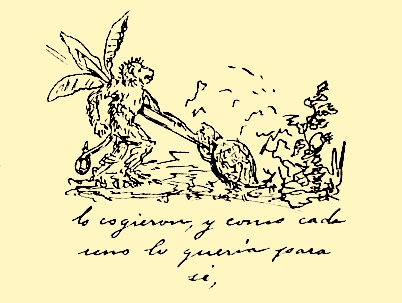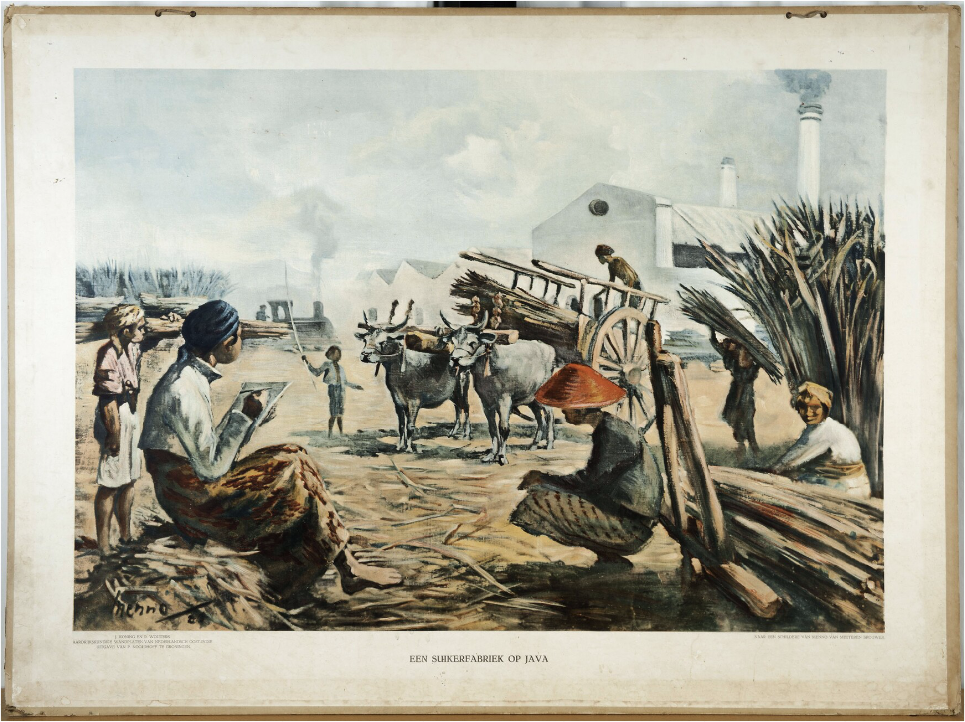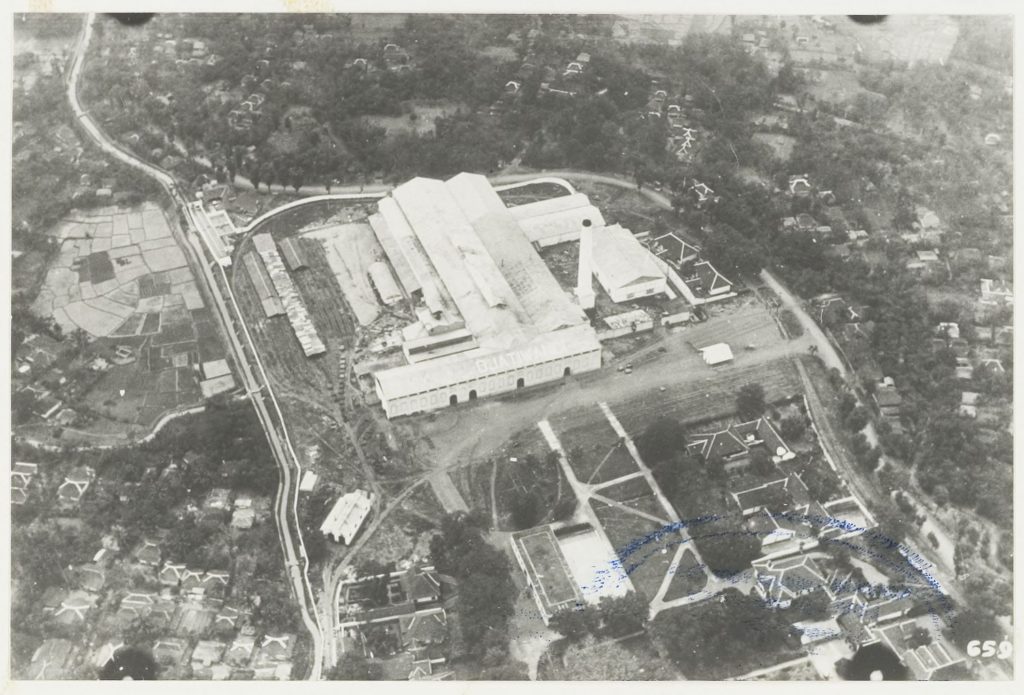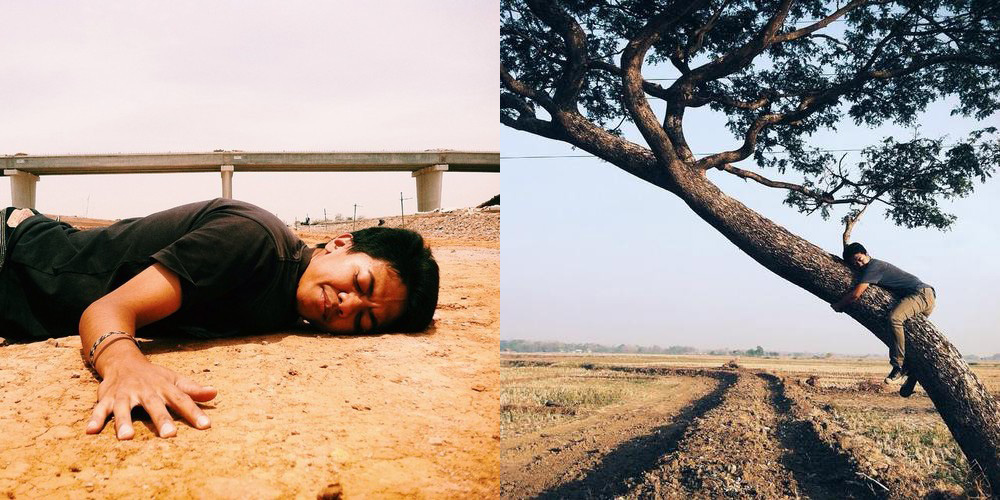Browse
While a highway and a new airport were being built, Jatiwangi was still with its rural landscape in 2014. Dump trucks swirled a huge dust cloud like an emperor’s army marched; people were like small mice seeking only survival. On that day of arrival, I heard that a serious car accident had happened, and a passenger found under the truck was in critical condition. I met Ismal Muntaha the first time at the kiln of Jatiwangi Art Factory (JaF). He came for a cigarette. Later in a group meeting, I perhaps saw another aspect of him. As a leader of JaF, he was the person who delegated works and took on all the responsibilities. He was a little green at that time.
Since then (and before that), JaF has developed countless practices and took part in several biennials. As George Clark accounted: “With all its ongoing projects–more than 50 just in last 18 months!” After the inaugurations of the new highway and the new airport, Jatiwangi slowly turns into a manufacturing industrial area. Several foreign-invested factories have entered and many of them are Taiwanese. The new manufacturing factories change the rural landscape, but it is not new to the locals. Jatiwangi had transformed before along with colonization, from sugar industry to textile industry and bricks industry. At the beginning of 2019, Ismal took a residency in Nusantara Archive. His research attempts to contextualize from a supernatural perspective investment in the free market and the history of sugar refinery industry…
Historical and Fictional
“What is your zodiac sign?” I asked. These past few days, Ismal more than once interpreted other people‘s actions by analyzing their zodiac signs.
Gemini.
“What are the characteristics of Gemini?”
Just like me.
“How would you describe, or position, yourself?”
Hard to concentrate. Gemini always wants many things at once, hard to focus on one thing.
“Then, what is the process of your execution of films, artworks, or projects?”
It has always been changing. I made very different works in the past. I have faced different paces. I only started making contemporary art after coming to Jatiwangi. Before that, I made films at ‘Sunday Screen.’ The way of thinking and the way of creation were very different from now.
Ismal tilted his head,
Now it is like…I ’m interested in myths, rituals, and fictions. They have many layers in this contemporary era. We are highly digitalized now, but we are also missing some ancient rituals. We are still people who believe in supernatural forces. The way we see facts, and history, is really blurred between fiction and history. Reading history is like reading a novel. This kind of blur really interests me.
“I had the same thought,” I nodded, “The lack of historical sources is a pain when doing research. I used to think it was such a regrettable thing, having no well-documented history, Now I have started to think that, this view might be problematic.”
I asked, “So what is Indonesia’s story? Who writes history in Indonesia?”
Basically, our history is recorded through oral history, and legends. We always love to talk about those legends/myths/mythology/local stories. This is our daily life. Every village has its own stories, mythology, and legends. The history of Majalengka is basically legends; it is the same for My ethnic group (Sundanese).

Ismal is Sundanese.
There is a story from before the Dutch colonization: there was another kingdom under the sea, because a king on Java lost the war against the Dutch people, so he married the daughter of the Sea God, and established another kingdom deep down in the Java sea.
“What a beautiful story…”
But simultaneously, the Dutch also created stories and oral history like this.
The localized governance. “Would you like to give an example of Sundanese oral history and the stories created by Dutch?”
I should double check exactly which ones were created by Dutch.
Ismal said carefully…
One I know is about the history of Perang Bubat (Battle of Bubat). It was fought between Java and Sundanese kingdoms. Under certain contexts, the story has led to extensive debates, some have lasted even until today. Some historians believe that the Dutch invented the fictional story of the Battle of Bubat to divide the power of people on Java. This was a means common during the colonial period; it is the so-called ‘divide et impera,’ a strategy to stir up horizontal conflicts between kingdoms.
“Just like some people believe that ‘the Gulf War never took place.’”
Dutch had strong influences on Sundanese literature as well. K.F. Holle, who was an officer of the Dutch Tea plantation company, published a fable titled ‘Tjarita Koera-Koera Jeung Monyet’ (The Turtle and the Monkey) in 1851.(註1) It has become extremely popular; even when I was a child my parents always told this story as a bedtime story. Holle was engaged in publishing, and encouraged many Sundanese writers to write their stories. Though Holle had contributed to the development of Sundanese literature, he remained suspicious, as he served as an honorary advisor to the Dutch East India Company.”
I became curious, “Do you regard oral history as fictional stories, or partial truths?”
We know history has always been tied together with power, and I believe it also includes oral history. If oral history was fabricated and distributed by the authority (kingdom or government), people would be more inclined to regard it as the fact. But if oral history came from the community, such as folklores, it would be recognized as fiction. Whether oral history comes with or without the inclination of the authority, it always has similar contexts or formats. I have always been interested in probing true history through fictional accounts; most people regard them as myths. However, I see those fictions as an open source, onto which all people are free to add more fictions. Because there will always be gaps in history, and fictions fill up the gaps, just like a kind of critical dialogue.”
Seeing oral legends as open source, and the addition of fictional details as critical dialogue, how interesting. “Do you write fictions?”
No, but I want to. During my university time, I met some people from the writing club. We always read books and novels, and wrote short stories, short fictions together. But that was only in my university time. Now I write fiction in another way.
Ismal leaned back against the chair,
For me, ‘fictional’ and ‘fake’ are different. Fiction resembles more the creation of imagination. For example, one of my projects is making a customized shingle and giving it to an inspiring person of the village every year. It’s like an honor. If you see a house with this kind of shingle, it means that a person who has inspired the village lives here. I see it as an investment, an investment in honor.
“What’s your imagination for this project?”
Carry out some sorts of intervention on the investment between Taiwan and Indonesia, conduct research on how the spiritual dimension affects investment, and study Taiwan and Indonesia during the Dutch colonial period from the perspective of historical research.
Cultural Landscape: Open and Exploitation

Over the past few days, we have spent quite some time studying the history of sugar trade of VOC. It is said that VOC wanted to build Taiwan into the base of operation for sugar trade, but after being defeated by Koxinga, the Dutch East India Company had to relocate the base to Batavia, and developed sugar industry on Java, which has tremendous influences on the Chinese migrant sugar workers, culinary culture that prefers sweet beverages, changes in vegetation and cultural landscapes, and even the global political-economic structure today.
Indonesia and Taiwan have something in common. Both of us had sugar factories; both our futures and lands have always been occupied or constructed by capitals. These industries have changed our cultural landscapes
Ismal told me.
During the Dutch colonial period, the number of sugar factories in Indonesia increased because of new investments. The government monopolized the sugar industry at the beginning, but after losing large amount of money in wars, the government needed to rely on the sugar industry to compensate for the loss, and thus worked hard to generate more profits. It was during the Liberal Period of the Dutch government, and some Dutch people reflected on colonization, and deemed it a bad deed; ‘we must better educate the people of the colonies.’ So there was a new policy on ethics called the ‘Ethical Policy.’ Consequently, the land system of the sugar industry was changed, and investment was liberated. However, when the colonial mother country tried to be more ethical by opening up investment, it also gave rise to another kind of exploitation. Opening up investment, to me, is not so much different from what’s happening now. The government uses our land to attract investors. Same thing had happened during the Indonesian sugar era, and in the 1930s. How capitals have taken over our land and speculated and traded our villages/cities, these things remain the same. We sell our land, and we cause exploitation.
“Why do you only focus on sugar industry? Are bricks and shingles produced in Jatiwangi not exported to other countries?”
Yes, during 1980s and 1990s, they were sold to Brunei, Malaysia. Most of the constructions used bricks and shingles from Jatiwangi.
“What’s the function of sugar factory during the Japanese colonization?””
Older people in Jatiwangi said the Japanese turned sugar factories into bricks and shingles factories and sugar cane fields into cotton fields. The Japanese also taught them how to produce textile, and how to use weaving machines. (He paused for a second,) The interesting thing is that the knowledge from that time is lost. We cannot even find any weaving machines from that period. They might have been destroyed or thrown away.

“Who were the original property owners of these new factories?”
Truth is, our government has a regulation that forbids foreigners to purchasing properties in Indonesia. Investors can only rent the land for a certain length of time. According to the policy, investors can rent the properties for up to 80 years. To rent a piece of land for such as long, it is almost the same as owning the property. And there is always an alternative measue to own a piece of land in Indonesia, many foreign investors simply marry a local citizen and then buy properties using the names of their spouses. The truth is that a lot of land in Jatiwangi has been sold. Land grabbing by capitalism is happening right now. During the Dutch colonial period, exploitation could work because the Dutch collaborated with local rulers. They did not directly exploit the people; they were the boss, and local regimes and people were their subordinates carrying out the exploitation. What the government officials are doing now is exactly the same as the old kingdom during the colonial period.
“So, the government is like a broker, taking care of things for investors?”
There are also many brokers, agencies engaged in such business. The key lies in the government’s agreements; if the government refused, those agencies, brokers could not do anything. If foreign investments were inevitable, then, what are good investments that improve local economy and do not exploit the people?
“Such a difficult issue…”
People in Jatiwangi actually welcome new investments. They see these as new job opportunities. They do not care about exploitation, or what has happened in an old industrial area, Tangerang, near Jakarta. After a long period of industrialization, Tangerang now faces many issues of pollution and exploitation. But here, people are celebrating the new factory, because ‘we can finally get new jobs.’
“Perhaps try more concrete ways to guide their thoughts?”
In JaF, we are not so good at creating conflicts or launching resistance. In my experience, JaF creates happiness and collective pride. We formulate our plans in response to the changes, because we understand that we were already defeated in the very beginning. We cannot change many things, but we still have the energy to create imaginations and construct our own order.
Critical Thinking and Negotiation
“What kind of imaginations do you want to propose?”
It is still meaningful to research on how to intervene. For example, hacking into investment from the spiritual dimension. How great an influence can the spiritual dimension have on business behaviors? Many Chinese investors check Chinese zodiacs when they invest in the stock market. This is an entry point we can leverage on to intervene with how investors see the land.
“Intervene how they see the land?”
Investment is not just about money; labor can be cheap, land can be inexpensive. However, there are other aspects you must respect when you obtain the land. Environmentally speaking, offering land is not just about properties or assets, it is also spiritual, and about balance in nature.
“Before the highway was constructed, were the citizens informed?”
Informed, of course. There were some protests, not against the highway but against the price; they wanted to negotiate a more reasonable price for the land. We could never fight a national project; although we have the right to reject development, generally speaking, development will be carried on. For example, there is a new airport being constructed in Jogja. KUNCI also advocates for the villagers who don’t want to move. But the project will nonetheless go on. The government has already took down their houses…There is nothing we can do, and our protests achieve nothing.

Even in the so-called democratic country, the government still takes on a strong stance and does not take no for an answer.
I think we are not the saviors, or experts who can solve the problems. We are not working for or with the community at all, because we are ourselves members of the community. I, and those farmers living in Jatiwangi are all equal. We live in the same village; we fight as a member living in this community. We believe art can sustain our survival, and that’s why we do art projects.
I remember the first time I interviewed Isaml on Skype, I felt that Jatiwangi is the sole motive of his actions. I though his endeavors were similar to activism or community work. But now he told me he was not a leader, but one of the citizens.
You do not want to become an expert who solves problems…
It’s interesting to see how does Ismal identifies himself.
We cannot talk about something not connected with the place we live. For example, we were invited to several biennials, but those were not important to our neighbors. They did not care about those events… They were just interested in ‘What was the Netherlands like?’ ‘Aya bala-bala teu (Is there any bala-bala)?’ — ‘bala-bala’ is our local food — they see us as neighbors. That’s why we cannot go too far from Jatiwangi.
“Cannot go too far?”
We cannot talk about something that is not really connected with our daily life in Jatiwangi. These principles give art greater significance to us. I hope it is not too offensive, but making abstract painting doesn’t have much connection with our daily life. If I lived in a big city, and had a studio, then it would make sense to create that kind of artwork. We can be engaged in art in other ways. We organize ourselves as the artists, believing that art is not only a tool to face, construct, and experiment with daily life, but also the strategy. This makes us different from activists. Most activists advocating for communities travel around a lot, which sometimes takes them farther away from the community. They live in the city, and come to rural areas or villages to evoke people, but the truth is they are quite distant. To me, the problems activists see are usually not problems to the local citizens. This is a real and existing gap in community actions.
“As you said, people are celebrating the new factory.”
Maybe the activists would say it is exploitation, but we are celebrating. ‘Welcome!’ ‘We will finally have the money for shopping!’ Since we live in the same village, it’s hard for us to act like the activists. If we say no…but those people are our neighbors… it would damage our relationship. Three of JaF members are also working in the ShoeTown factory, they are still our friends. Even Hanyaterra got invited by ShoeTown factory to perform at the opening day. Some senior executives and managers of the factory also came to JaF one day, and bought our ceramic works. Then, let us find an imaginative way to survive, not to save but to survive.
In the context of Jatiwangi, relations are the scenarios,
Hel snapped his finger,
I want to make a guidebook: ‘How to Invest in Jatiwangi according to Fengshui.” We will distribute this guidebook to investors as a reference at Indonesia Trade Center. It would be more like a reminder to investors: Respect Nature.
In Jatiwangi, people celebrate new factories, new investments; however, I have no interest in saying what is right or what is wrong. In this contemporary era, what is happening is like what had happened in Taiwanese rural villages in the 1950s and 1960s. People celebrated new opportunities to make money. We cannot divide the world into two, right and wrong; we should not limit our options to resist/accept/reject/avoid, and what we should do is to mix and blend.